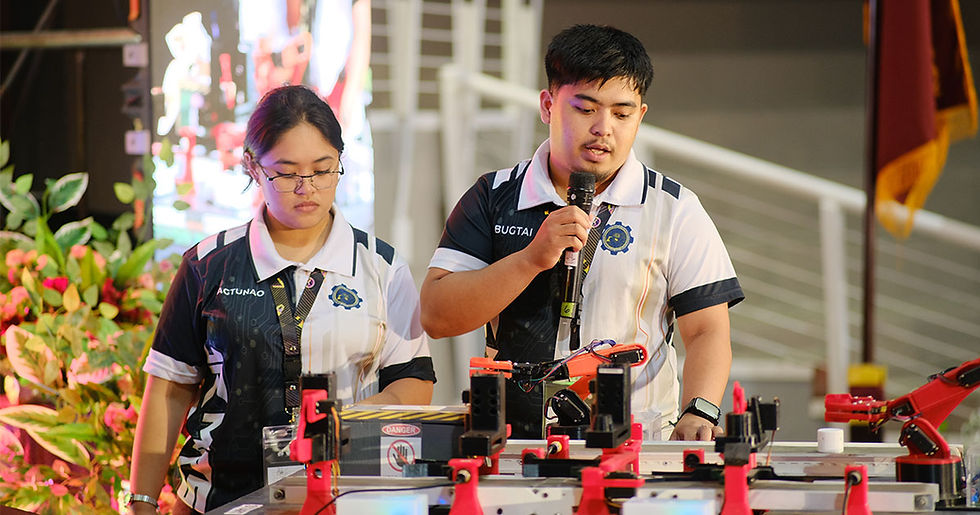Measuring Material Tensile Strength
- Field Ready

- Nov 8, 2016
- 3 min read
Have you ever tried to measure tensile strength for materials? Often, the process requires a test machine in a lab that could cost more than you expect, and is time consuming.
How can you readily and affordably capture a material’s tensile strength? One successful solution involves simple mechanisms containing a power source and a tool to measure force. This post offers one alternative from Field Ready experience to make a tool that can test materials of low tensile strength, such as fabrics and rubber.
The goal is to create a tool that is easy to use, simple and inexpensive. You need a force-generating mechanism, such as ratchet straps, a hydraulic piston, a chain hoist, mechanical power using screws, a pallet truck or a forklift. Ratchet straps are easy, less expensive and safer to use than the other options.
To select the force measuring tool, first predict how much force you might need. Then, you can choose from a wide range of options, including a spring scale, crane scale or load cell. Field Ready chose the crane scale because it is easy to use and gives numerical results that are more accurate.
What will hold these parts? Field Ready designed a rectangular frame from readily available materials to bear the force generated. The frame has jaws that can hold the specimens, and is measured to account for the specimen size. All these parts, when assembled together, will form a tool that can be used to test the materials.
Field Ready has made this tool to test fabrics and rubbers as part of an airbag lifting project. We determined that the maximum force might be 300 Kgf for a sample size of 50 mm in width, but we designed all the parts on 1-ton load capacity to achieve a safety factor of 3. Then, we selected ratchet straps, a crane scale, frame profiles, eyebolts and screw bolts. Clamps are being designed to make the load centric in the frame. In the frame designing process, it is important to design the beams against bending stress, and columns against buckling stress.
The figures below show the parts Field Ready purchased.




Field Ready tested 7 types of fabrics (Canvas – Waterproof, Canvas – Non waterproof, Cotton, Linen, Denim, Polyester, and Curtains) and 3 types of rubber (Sheet Rubber – Reinforced 3 mm, Sheet Rubber 3 mm, and Inner Tube rubber).
For all the fabric, we used one set of specimens (3 to 5) taken from the middle of the fabric sheet and not from the edges. The size of the sample is a total of 6X30 cm with clamping areas from both sides. For Rubber, we used one set of 3 specimens for every type of material. The size is shown below in the figure (taken from ASTM D412 2006 (Die C)).

The pictures below show all the specimens cut and ready to be tested.


Test Procedure
It is good to have a camera on hand to record a video of the testing and capture when and where a fracture occurs. The methodology used in conducting the test is the following:
Determine the sizes of the samples, which depends on the standards and the capability of the testing tool.
Aquire and/or make the samples of fabric and rubber.
Make sure that the testing tool is assembled properly - rigid and all the items collinear and at the center of the frame.
Install the specimen in the lower holder of the clamp, making sure the specimen is mounted between the inserts of the clamp properly and applying a holding force.
Extend the ratchet strap up to the other side of the specimen and fix it in the upper holder.
Make sure that all the items stay collinear and in the center.
Stretch the ratchet strap until all items are tightened.
Reset the scale.
Start applying force using the ratchet strap. Measure the force applied and elongation suitable to specimen intervals.
Continue applying force and measuring the parameters until the specimen fractures.
Specify the force and elongation at rupture.
Calculate the percentages of fracture stress and elongation.
Repeat the test two times for similar specimens.
Calculate the average fracture stress and elongation.
RESULTS

This procedure will help you test various materials in a cost-effective, efficient and accurate way.

_edited.png)




Comments